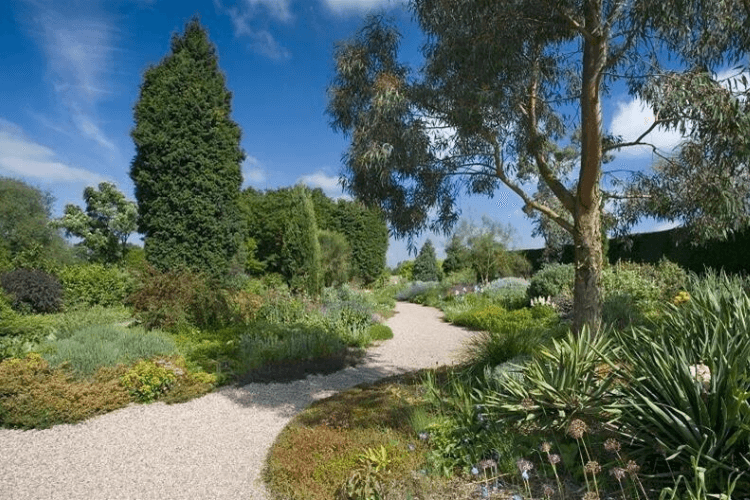
CEO & Garden Designer
Ruth Marshall
Category: Design, Landscaping, Maintenance
Right Plant, Right Place
Designing a garden with plants for long-term success
“Right Plant, Right Place” is a well established principle of gardening, and the title of an excellent book by Beth Chatto some decades ago (still worth reading despite it being an older title) and has inspired many books and articles since. The Beth Chatto gardens near Colchester remain open and are an absolute masterclass in low maintenance planting in a dry environment, and look stunning throughout the year.
Image courtesy of Visit Colchester
Many people have written extensively on the subject of planting choices, and my goal here is not to repeat it – but we do recognise from working with many clients that choosing plants can feel overwhelming. It is fine if you want to leave it to the professionals to pick everything, but most people want to choose at least some of the plants themselves. Check out our other planting blogs for tips on styles and recipes, but here we are talking about the suitability of the plants to your particular garden.
Getting this right has become easier now that you can quickly check online for a plants’ likes and dislikes before purchasing, but for many this can make a trip to a nursery feel like a school trip rather than a pleasure. I thought I would do a gallop through some of the main species we use (or don’t use) in certain common conditions as the short intro to the topic for those that either want a starting point or do not wish to read the books!
Below are a few thoughts based on tried and tested recipes.
What to check for in your own garden:
Soil type (acid versus alkaline)
Ph testing papers are cheap and knowing the Ph (or “Acidity”) of your soil is very helpful as this really does include or preclude some significant species. A shortcut is to look in local gardens for what is growing well – if you see lots of heathers and rhododendrons it will be acid!
When testing, test across the site and not just in one place. If your soil is strongly one or other, or is heavy clay (see also under drainage) you do need to know this. The majority of commercially grown plants are pretty tolerant of both but there are a few popular ones that will not tolerate the “wrong” soil. In general do stick either to plants happy in almost any soils or those that suit your soil – you can shift the properties of soils a bit but if yours is strongly alkaline you are definitely making your life very difficult if you try to grow acid lovers in the ground (and of course vice versa). Better off to create specialist raised beds or large pots for these.
Acid Soils
Key species: The most obvious are Rhododendrons and Azaleas which are fabulous showy and colourful shrubs, Rhodys are evergreen, and azaleas make up for this by an array of bright colours and many are strongly scented – what’s not to like?

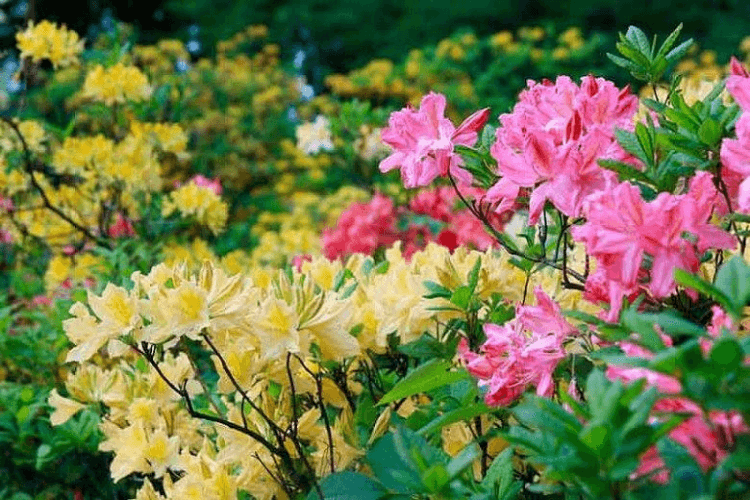
These acid lovers will not thrive in alkaline conditions. Acers also prefer acid soils, although in my experience Acers are more adaptable, and will certainly do ok in neutral soils, particularly strong commercially grown species like “Bloodgood”. Other strong acid lovers include; Pieris, Heathers and Camellias, none of which are in my view worth growing in the ground unless you have an acid soil or are prepared to do some heavy duty soil replacement. Just planting with some peat does not do the trick!
Tolerant of a wide range of soils
There are plenty of others that apparently prefer acid soil but I have found in general they perform well on more neutral or even slightly alkaline soils – such as Magnolias, Ceanothus, Liriope, and Japanese Anemones. Maybe these plants haven’t read the books!
Alkaline Soils
Key Species: Alkaline soils tend to divide into free draining chalky soils and heavier clays. There is some overlap in what will grow, but again it is worth knowing which you have and doing a bit of research.
Obviously more plants will grow in the mid range – not too boggy and not too dry – this includes; Roses, Philadelphus, Weigela and Peonies, all of which will benefit from a good rich organic compost. Similarly Smoke Bush (Cotinus) and Viburnum, plus Euonymus and Euphorbias. The lovely black Elder will grow well in most alkaline soils (Sambucus nigra ‘Black lace’ – a good substitute for an Acer) as will Hydrangeas and Thalictrum. Hostas love it moist and heavy. There are also plenty of spectacular plants like the Crown Imperial (Fritillaria imperialis) which prefers the heavier and richer soils. Almost all clays will be better for a bit of breaking up with grit and/or the adding of some rich organic compost.
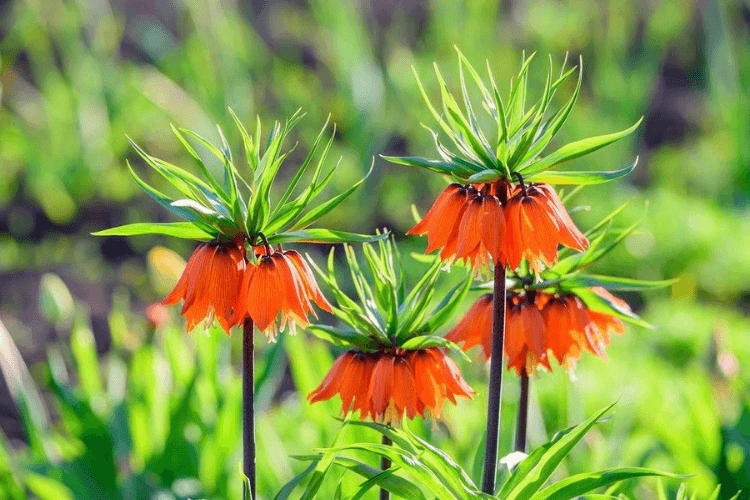
Lilacs like chalky soils and will tolerate a wide range in my experience, from quite heavy clay to chalky and well drained. Lavender loves it alkaline, and will tolerate a fair range of Ph, but will not tolerate heavy clay and poorly drained soils.
Drainage and sun vs shade
There is a link between these two – both in terms of how the plants tend to behave and how to help them to extend their preferences a bit. Most plants can be pushed outside their top preference as long as the other conditions are good. Thus many sun lovers will tolerate some shade as long as they are not too dry or too boggy. There are however some top shade plants that really struggle in the sun and vice versa.
Best Shade Plants
There are some good evergreen shrubs for shade such as Pachysandra, Skimmia, Fatsia, Osmanthus and Aucuba that will look miserable in full sun. Yew on the other had will tolerate both (but hates being waterlogged or too dry). In terms of smaller plants, Digitalis, Hellebores, Pulmonaria, Primula, Campanula, Dicentra and Astilbe are all good, as are Liriope and Nandina. A tried and tested pairing is a mix of Ferns plus the ever useful Brunnera and Hostas if you can keep the slugs under control. My top tip is to add in Hakonochloa, glossy dark green Asarum, and the beautiful purple Athyrium Nipponicum for a really showy shade planted area.

Dry Shade
Few plants will tolerate things being really dry as well as shady so this is where I would add irrigation if at all possible – it will expand your options massively and pay you dividends. For hard dry shade you are more limited. Liriope, Fatsia, Astrantia, Hellebores, and Euphorbia Robbiae appear on most peoples lists, plus Viburnum davidii, Viburnum tinus, Dryopteris ferns and Epimedium. I have had mixed results with these, and all will benefit from at least some watering while establishing at least. A good mulch will pay dividends in these areas, retaining the little moisture there is, and reducing competition from weeds.
Best sun lovers
Many of the most familiar flowering perennials and shrubs love full sun, such as Salvia, Echinacea, and Delphiniums. This also includes almost all grey leaved plants such as Lavender and Olive, the full suite of bearded Irises, and Peonies. Also pretty much all red leaved plants such as Physocarpus, and some of the Hyrangeas like H. Quercifolia.
Again it is all a matter of degree, these will do well in full sun as long as they are not starved of water so if your soil is very free draining you will either need to modify to more drought tolerant species (see below) or add some combination of watering and soil enrichment and mulching to hold in more moisture.
Drought Resistant plants
Many grasses are drought resistant and I refer you back to Beth Chatto who was one of the first to use ornamental grasses, and also to the fabulous Knoll gardens (www.knollgardens.co.uk) who have raised this to an art form with grasses in every possible position.
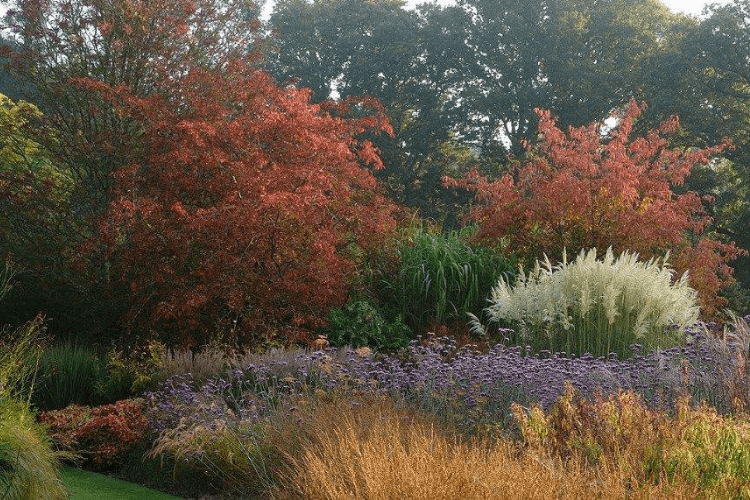
Other good species are Abelia x grandiflora, Ceanothus, Euphorbia and Sedum, as well as lavender, Artemesia and Hebes. Just take note that some of the drought tolerant cultivars with silver leaves are likely to be less hardy than British natives as many are originally Mediterranean in origin. It was notable that in the hard winter of 2022/3 many of these were the species that were lost (see blog).
How shall I approach my planting without needing a Phd in horticulture
If your garden is a pretty typical one, perhaps with a bit of shade, a mix of not great and ok soil, some difficult areas and a few good largely sunny spaces then plot accordingly. Divide into “broadly shady” “broadly sunny” and take note of what is heavy and wet versus dry (or clay which tends to swing from one to the other).
You can certainly turn dry shade into moist shade with irrigation, and baked sunny spots into pretty fertile sunny beds with a mix of some organic matter and irrigation, or possibly also grit to break up the clay more and some drainage depending on how bad it is. The extent to which you are prepared to adjust your conditions will drive the range of planting you can get to thrive. If you are up for working with what you have you will make your life much easier, but particularly in smaller plots you be prepared to do a bit of ground improvement, and this will pay dividends.
In my view – drainage to allow for planting of a fabulous yew hedge is well worth it, helping it to establish in its first few years – but if your spoil is waterlogged every winter then really don’t waste your time. Raised beds or large pots to allow for Acid lovers in my alkaline soil ditto.
Whilst we are trying to be more careful with water, some irrigation to cover the dry shade is a brilliant investment as this extends your planting options massively. This can be from rainwater capture or grey water if you are concerned about using too much water, and these systems are now much more affordable and less wasteful (using micro drippers and sprinklers).
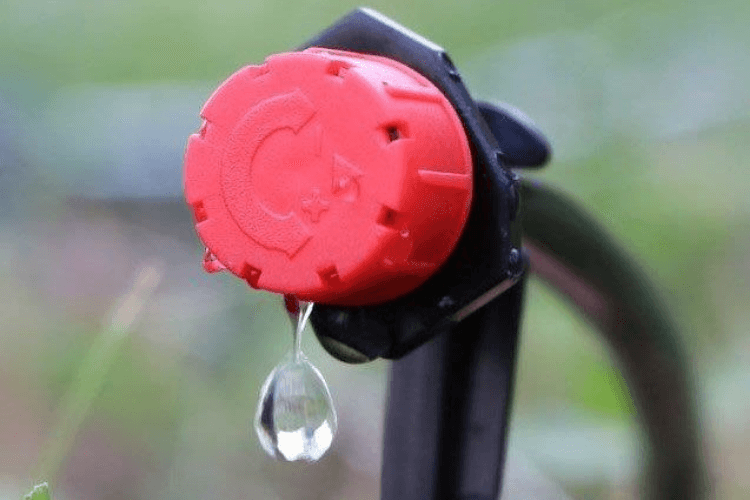
As a final thought – don’t be put off by not knowing what to do – if you love plants and are up for sitting with the books and plotting your chosen species then you are already well on your way, but if not, do remember the plants haven’t read the books! Aim for plants that appear on these or others lists of reliable choices for the majority of your planting and the expensive or signature plants, but feel free to try something you just like the look of as a treat! There are many species that will actually do well where you put them if you give them a bit of help, and most species grown commercially for the garden centres are hardy and reliable. If you really want to try something that won’t be in the ideal position then it is often worth a punt. You may not be able to control the amount of sun for example, but you can plant in good soil, and keep it well fed and watered, and can thereby maximise its chances. It might not grow as fast or perhaps flower as well as it might, but experimenting is all part of the fun.
Every site has chaotic micro-environments that may or may not become clear as you pay more attention to the planting. There may be dry patches, frost pockets or boggy bits. Warmer zones (particularly against walls), areas that get wind whipped, and areas of particularly good (or poor) soil. There is always another level of detail so try to enjoy what you are doing and learn from each success or mistake. If a plant doesn’t like where it is then try moving it (I don’t recommend doing this too often, but if after 3 months it hasn’t perked up it probably isn’t going to!).
Summary
The principles of right plant right place are clear, but the level of detail you choose to go to is your choice. Don’t make it is misery- this is supposed to be fun! If you haven’t the inclination to choose your own, get a garden designer to do it for you- it probably wont cost you much more than doing it yourself, and you will save in the long run and probably get larger and better plants than you can get from most plant centres. If you love plants and want to choose your own, then get together a broad palette of planting, starting with the structural plants (trees and hedging) and then moving into the main areas of your garden as highlighted above. Be ready to make changes over the years, the plants will tell you if they are happy, and the ever-changing palette is part of the joy!
CGLA are an award winning team of Garden Designers, Landscape Architects, Landscapers and Garden Maintenance Operatives working in Buckinghamshire, London and the South East, as well as on prestigious design projects across the UK and abroad. We are currently working in Oman, Jersey and France, and welcome enquires for design, landscaping or garden maintenance. Contact us here
